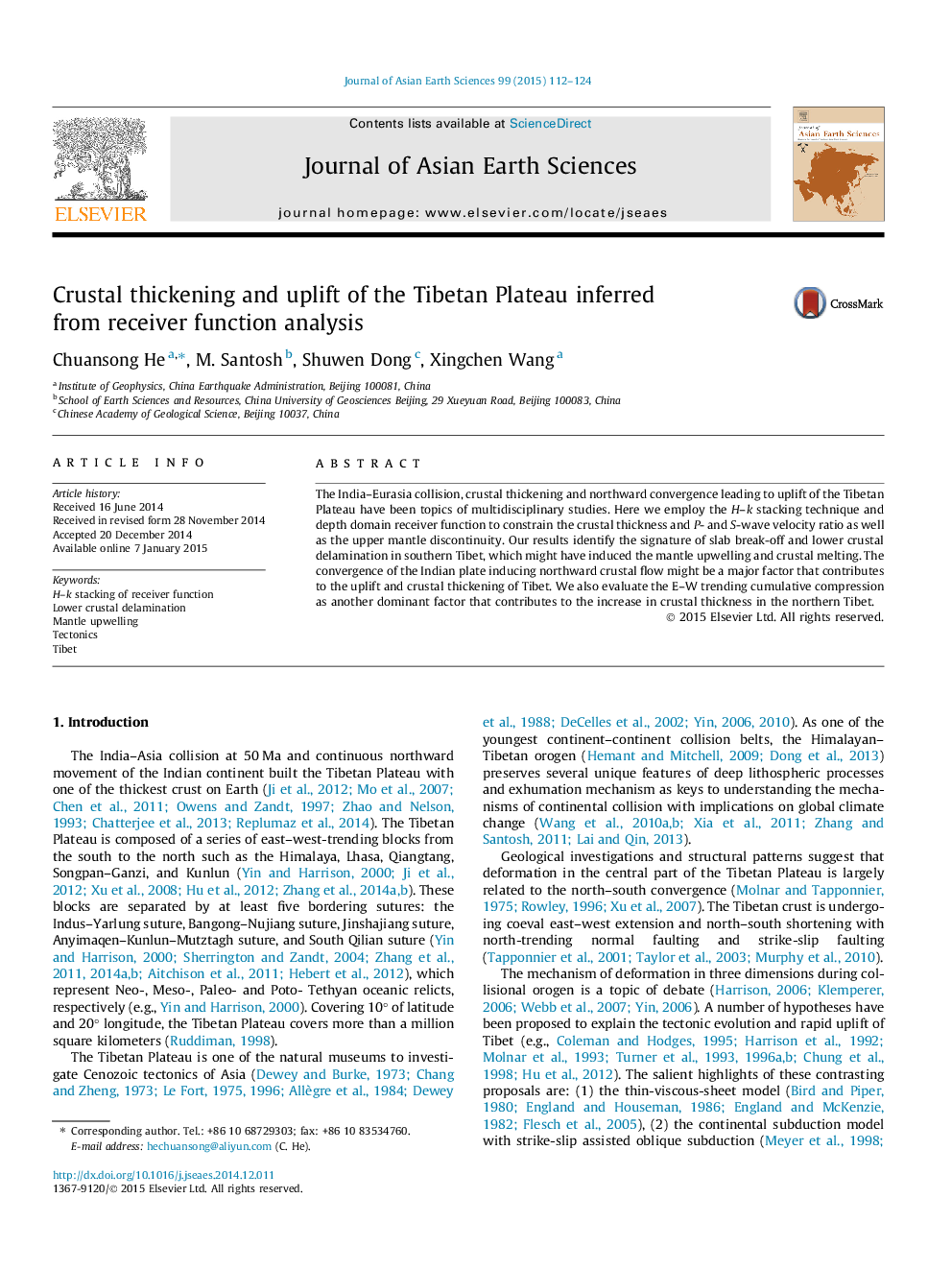| Article ID | Journal | Published Year | Pages | File Type |
|---|---|---|---|---|
| 4730464 | Journal of Asian Earth Sciences | 2015 | 13 Pages |
•Higher Vp/Vs ratio overlaps with thinning crust in the western part of Tibet.•The crustal thickening is inhomogeneous in Tibet.•Shallower domain in the region of 410 and 660 km discontinuities in southern part of Tibet.
The India–Eurasia collision, crustal thickening and northward convergence leading to uplift of the Tibetan Plateau have been topics of multidisciplinary studies. Here we employ the H–k stacking technique and depth domain receiver function to constrain the crustal thickness and P- and S-wave velocity ratio as well as the upper mantle discontinuity. Our results identify the signature of slab break-off and lower crustal delamination in southern Tibet, which might have induced the mantle upwelling and crustal melting. The convergence of the Indian plate inducing northward crustal flow might be a major factor that contributes to the uplift and crustal thickening of Tibet. We also evaluate the E–W trending cumulative compression as another dominant factor that contributes to the increase in crustal thickness in the northern Tibet.
